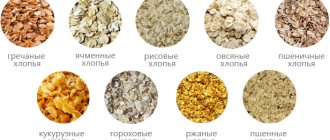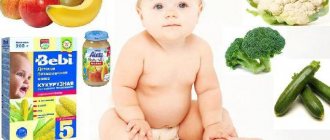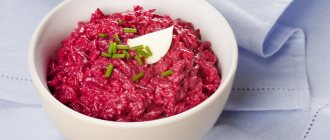Levchuk Victoria Aleksandrovna©
Complementary feeding at 11 months is more varied and does not cause maternal anxiety. The child prefers certain dishes, his diet is close to the adult diet, but there is no need to rush and transfer him to the common table. This article contains information regarding complementary feeding for children aged 11 months and older.
If your baby is still breastfeeding, you should not wean him off. There is a lot of strong, favorable evidence that continued breastfeeding helps your baby be healthy and happy. However, please note that the volume of milk consumption may decrease significantly; many mothers even refuse to supplement with breast milk during the day, continuing to feed only early in the morning and in the evening. If your baby feeds from a bottle, then you should try to give it up at this age. To start, offer your baby all liquids, including formula in a cup, and avoid bottles. However, you should not give up formula until your baby is 12 months old. Formula milk should be chosen that is ideal for this age group as it is loaded with the right amount of iron for good health.
A child at 11 months should feed himself, either with his fingers or with a spoon. We continue to develop the child's taste, so we add different flavors to food. If your baby is a particularly picky eater who constantly pushes the spoon away, don't give up. We continue to try new products. Sometimes, a child is offered food 12 to 20 times so that he understands and tastes the dish. At the same time, you should not force your child to eat. It's better to let small children decide for themselves when they are full. Research has shown that children who clean their plates often turn into gluttons later in life.
Complementary feeding at 11 months: What to feed???
Table of contents:
Complementary feeding at 11 months is not very rich in new dishes. Therefore, it is necessary to take advantage of this period to add to the lunch foods recommended in previous months, which for various reasons have not yet been introduced into baby food. We also continue to introduce products that were recommended at 10 months for introduction into the baby’s diet. Anyone who wishes can try introducing kefir, cottage cheese and yolk into the child’s diet, but we remind you that many pediatricians advise waiting until 12 months. However, if the child has not shown a tendency to allergies during the entire period of complementary feeding, then you can try to introduce these products earlier than the specified period.
Complementary feeding at 11 months means that the child sometimes takes adult food from the common table and tries it, but it is necessary to carefully monitor what the baby takes. It is clear that it is too early for him to try sausage, candy, coffee, honey and other similar products. Therefore, you should not give all the products from the common table, since the baby’s gastrointestinal tract is relatively easily subject to disorders, and the activity of gastric juices is low, so the total share of products should be presented in boiled and crushed form.
Most likely, at 11 months a child has 8 teeth, so the density of children's dishes should gradually increase in order for the jaw apparatus and chewing skills to develop.
For a child of 11 months, almost all dishes are cooked; boiling, baking, stewing and steaming are suitable. Salt, sugar and unfamiliar spices should not be added to baby food. If a child eats with adults, then you can cook without them, and then each family member will add salt or spices directly to their plate.
What to include in the diet of an 11-month-old baby
Vegetables are perfectly absorbed by the child's body. Due to their high fiber content, they have a beneficial effect on the digestive tract. They can be eaten boiled or stewed. Mothers prepare stew or puree. The degree of grinding depends on the characteristics of the child. If the baby can chew, it is not necessary to grind dishes prepared from vegetables. You can use:
- potatoes;
- carrot;
- beets;
- pumpkin;
- zucchini;
- cauliflower, broccoli.
At this age, one cannot live without fruits. When the little one is about to turn one year old, eating many fruits is allowed. But it’s worth knowing when to stop. Learn to alternate. You can prepare a puree from several components using a blender or grate the fruit. It is healthy to eat apples, bananas, pears, plums, and peaches. You should be careful with citrus fruits. It is acceptable to offer your child a little kiwi or orange, but then carefully watch to see if an allergic reaction follows.
It is important to remember that each fruit has a specific effect on the body. Plums have a laxative effect, apples can cause increased gas formation, eating large quantities of pears is also undesirable, as they are heavy on the stomach.
You shouldn't give up berries either. As a rule, they are given ground. Acquaintance begins with a minimum amount. Raspberries, strawberries and wild strawberries, currants, and blueberries will benefit. It is a source of a huge amount of vitamins, b-carotene, as well as folic acid. If the child does not have allergies, experimenting with berries at 11 months is quite acceptable.
Porridge is a mandatory component of the menu for an 11-month-old baby. Cereals come in gluten-free and gluten-containing varieties. The first include rice, buckwheat, and corn grits. The latter include semolina, pearl barley, oatmeal, millet, barley and wheat cereals. As a rule, the baby becomes familiar with the category of gluten-free cereals at the age of 5–6 months. Porridges prepared from such cereals are constantly present in the diet. The only gluten-containing foods you can use at 11 months are oatmeal. All others are gradually introduced into the menu only after a year.
Gluten is a plant protein that sometimes causes allergies. Porridges made from gluten-containing cereals may be poorly digested by a fragile child's body.
Porridges are prepared by cooking in a saucepan, in a slow cooker or in a double boiler. Without pre-chopping, you can offer the porridge when it is soft enough. And the consistency is such that the baby does not choke. This will help develop the chewing reflex. But you shouldn't rape a child. For those babies who find it difficult to chew at 11 months, it is better to give ground food.
Soups are a must in the diet. They should be light. Very rich broths for making soup are unsuitable for small children. The cereals used are the same as for porridges. You can add a piece of meat, which you will then have to chop.
As for meat, your child should be given low-fat varieties. Rabbit, chicken, and beef should be present on the table from time to time. Mom can cook meatballs or steam cutlets or, as already mentioned, throw small pieces into the soup.
Many parents are interested in the question of whether it is possible to eat fish for up to a year. The product is considered controversial due to possible allergies. However, the benefits are undeniable. You can include fish in your diet for up to a year. It’s worth starting from the sea. Low-fat varieties are suitable - hake, cod, pollock. As for the river fish, only trout is worth paying attention to.
Protein from fish is better absorbed than from meat. Another plus is the high content of amino acids necessary for the human body.
In addition to all of the above, fermented milk products should be present in the daily menu. Be sure to give your child kefir and natural yogurt (the taste can be varied with fruit). Don't forget about cottage cheese. Make sure it is fresh, better than homemade. The shelf life of cottage cheese is very limited. Despite the date on the package, it is easy to get poisoned with a store-bought product.
After each feeding and between them, you should offer your baby something to drink. Suitable drinks:
- tea;
- juice;
- water;
- compote;
- jelly.
An almost one-year-old child's menu should include bread. The only thing you should avoid is sweet products.
Adding sugar and salt to dishes is allowed. But reduce your sugar consumption to a minimum amount. And add less salt than to the taste of an adult.
And the most important thing is milk. Most children are still breastfed at 11 months. You can breastfeed both immediately after feeding and between them. The baby wakes up at night to drink mother's milk. This is quite normal for this age. As for cow's milk, its presence in the diet already takes place. For example, for making milk porridge. However, it is still better to give whole milk after a year.
Feeding a baby at 11 months: Regime
An 11-month-old child eats 4-5 times a day with breaks between feedings of 3 to 4 hours. Complementary foods are given 3 times a day. The feeding schedule is still five times a day, however, feeding times will change, moving closer to a more “adult” routine. All the time he can move by 2 hours, the feeding schedule becomes similar to that in kindergarten. If parents adhere to it for another 2 years, then the baby will easily get used to this institution. The child needs time to adapt to the new regime, we take this into account. However, the feeding schedule should be constant with intervals between feedings of about 4 hours. This helps the gastrointestinal tract function and prevents its disorders.
Some children refuse the fifth feeding, then the volume of food must be increased to 250 grams at a time. However, you should not transfer your child to this regime on your own if he is not yet ready. Since the digestive system is not yet ready to accept large volumes of food, we do not provoke stomach problems.
NUTRITION FOR A CHILD 11 MONTH OLD
Instead of morning breastfeeding, he is given kefir, yogurt or milk. Otherwise, the baby’s diet remains the same as in the previous month. It includes meat, fish, vegetables, fruits, cereals, dairy products, bread.
At 11 months, the child already has 8 teeth, and therefore in his diet it is necessary to gradually increase the proportion of denser dishes that require active chewing movements and develop the jaw apparatus.
This does not mean, of course, that the baby can be given all the food from the common table. His gastrointestinal tract is still quite easily subject to disorders, and the activity of digestive juices is low, and therefore all food must be given to him in boiled and sufficiently crushed form.
Even at the end of 11 months, in no case should you give your baby fried foods, marinades and pickles, regular meat and fish, canned food, herring, smoked meats, sausages and frankfurters, various spicy seasonings, coffee and cocoa, chocolate, candies and other sweets.
At the same time, some parents believe that a one-year-old child no longer needs any dietary restrictions, and many of the “forbidden” foods appear on the birthday table. The result is usually sad - a doctor has to be called to see the baby and the holiday often ends in the hospital.
Useful on the topic: PRODUCTS THAT CANNOT BE GIVEN TO A BABY UNDER 1 YEAR OF AGE
A child of 11 months still receives five meals a day. The time of individual feedings can be changed, adapting it to a more “adult” routine. So, a baby can get breakfast at 7-8 o’clock, lunch at 12 o’clock, afternoon snack at 16 o’clock, dinner at 20 o’clock, and at 22 o’clock he is usually given a glass of kefir or milk.
Approximate nutrition menu for an 11 month old child
- Breakfast (7 hours - 7 hours 30 minutes) - Porridge (boiled vermicelli or milk noodles) - 200 g, fruit puree - 50 g.
- Lunch (12 hours) - Vegetable soup with meat broth (30 ml) with white bread (10 g), vegetable puree (150 g) with steam cutlet, fish pudding (60 g), fruit juice - 50 ml.
- Afternoon snack (16 hours) - Whole kefir (150 ml) with cookies or crackers (10-15 g), cottage cheese - 50 g, fruit puree - 50 g.
- Dinner (20 hours) - Whole kefir - 150 ml, vegetable puree or raw grated vegetables - 50 g, fruit juice - 50 ml.
- At night (22 hours) - Whole kefir or milk - 200 ml.
This daily routine can be shifted to an earlier or, conversely, later time, depending on whether the child is accustomed to getting up in the morning and falling asleep in the evening earlier or later.
However, eating hours should be relatively constant, and the interval between main feedings (breakfast, lunch, afternoon snack and dinner) should be at least four hours. This promotes the rhythmic activity of the entire gastrointestinal tract and prevents its disturbances.
Sometimes the child himself refuses the fifth feeding and switches to a four-time diet. In this case, the amount of food per meal must be increased to 250 g.
Useful on the topic: A CHILD DOES NOT WANT TO EAT ANYTHING: HOW TO RECOVER INTEREST IN FOOD?
This should be done very carefully, since a sharp increase in the volume of food eaten can cause overstrain of the digestive glands and lead to various gastrointestinal disorders.
By the end of 11 months, the baby’s weight increases by 350 g and height by 1.5 cm.
In total, during the first year of life, the child gains an average of 7 kg 150 g in weight and 25 cm in height.
He makes an even greater leap in physical and neuropsychic development. During this time, a small man was formed from a helpless newborn baby. He still requires a lot of care and attention from adults and needs their care, but he already has some skills, is learning to speak, and most importantly, is actively exploring the world around him.
RECOMMENDATIONS BY AN EXPERIENCED MOTHER
An excerpt from the book by I. Khankhasaeva “The daughter is growing, the son is growing.” Notes from a mother of four children.
The diet remains the same. Unless you want to completely stop breastfeeding your baby during the day. This way, you will have two breastfeedings: morning and evening.
Evening feeding is very important from a psychological point of view, especially for weak, fearful, nervous children. This is not just “feeding at night” (although this is important for those babies who have difficulty getting used to a long night period), but also a necessary ritual that calms the child, relaxes him, reconciling him with the idea that he will now have to lie down alone to bed and fall asleep.
Useful on the topic: HOW TO HELP A CHILD LEARN TO CHEW?
How long should I keep it? It depends on your desire and mood. The meaning and benefits of it after a year are, perhaps, only psychological in nature. If it gives you pleasure and makes your baby happy, why not breastfeed him for another two or even three months?
True, I know how the feeling of lack of freedom accumulates over the course of a year, connected with the fact that you can’t go to the theater in the evening, you can’t stay at a party, you can’t drink a single sip of wine... Weigh it all. In any case, you have something to be proud of: you breastfed your baby for up to a year! Nowadays, few people can boast of this.
Subscribe
to our page on Facebook so as not to miss the most useful and interesting articles about babies.
Source
Feeding a baby at 11 months: Table manners
Complementary feeding at 11 months is interesting because the baby eats on his own, but not as carefully as an adult, but on his own and without outside help. If the child still eats with your help or does not eat on his own at all, do not be upset; by the age of 1 year and 4 months he will definitely take a spoon, just do not interfere when this happens. Then there will be periods when he will refuse to eat on his own, so be patient.
At 11 months, the child is more picky about what he eats. Now, if he doesn’t like something, he will refuse to eat it, choosing only one product. Therefore, mothers have to come up with ways to diversify baby food in such a way as to feed the baby. However, you should not force feed your baby. When a child is hungry, he eats almost everything. If there is a break of more than 4 hours between feedings, and the child does not show interest in food, then it is worth thinking about. You may need help from a pediatrician if your baby is apathetic or exhibits other symptoms. Although most often the reason for not being interested in food is frequent snacks between meals, or the baby drinks a lot of water, as soon as you cut them down, the child eats his lunch with pleasure.
We remind you that you should not force your child to eat, as this can lead to health problems, both psychologically and physically. I think you already know the child’s intake, so we put on the plate as much as he will probably eat; it’s better if he asks for more or washes it all down with breast milk. A child grows and constantly develops, so his taste preferences may also change; do not be alarmed if he one day refuses his favorite dish.
A parent’s desire to feed the baby as much as possible can do a disservice to the child in the future, so I remind you, no cartoons or toys at the table, only a quiet family conversation.
What foods should be introduced before the year and how to do it correctly?
The age of 11 months is the optimal time to introduce citrus fruits, strawberries and pomegranates. If by this point it has not been possible to instill in your child a love for all the obligatory fruits, then it is better to postpone this stage a little, at least a couple of months. When everything goes according to plan and fruits are one of the baby’s favorite treats, you can begin to expand his menu.
At the same time, you need to remember what features each of the components has and how to get the maximum benefit from them:
- Children aged 11 months are allowed to give the listed products not only in fresh, unprocessed form. These can be non-concentrated juices, purees and even thermally processed drinks (jelly, compote, fruit juice).
Advice: The only thing you need to give up is candied versions of dishes (jams, candied fruits, jams and marmalade). It is better to postpone them for several months, otherwise the risk of the child developing uncontrollable thirst, allergies, diathesis or eating disorders will increase several times.
- Tangerines, grapefruits and oranges are those fruits from the citrus family that can be safely given to your baby. But do not forget that even they can provoke an allergic reaction. You need to start with a piece the size of half a teaspoon. There should be no films or excess fibers on it.
- As for citrus juice, you can use sweet and juicy orange or tangerines to prepare it. For one part of concentrate, take three parts of water. We start with a teaspoon (even if the baby is already accustomed to the pulp) and gradually increase it to 100 ml. If your child doesn’t like a sour drink, you can safely dilute it with pear, apple or pineapple concentrate, observing the proportions.
- To prepare the puree, it is initially better to use other fruits, adding citrus juices to them drop by drop. After some time, you can mix the pulp, adjusting the ratio in one direction or the other.
- After the baby has become accustomed to citrus fruits, it’s pomegranate’s turn. It is not necessary to try to introduce it exactly at 11 months; sometimes it is even better to wait up to a year. A fragrant fruit is given to an infant only in the form of juice, no matter how large the grains are and no matter how easily they are peeled from the seeds. It also needs to be diluted at least three times. For the first time, we give the baby no more than half a teaspoon of the drink.
As for strawberries, you don’t have to be as careful with them, but it’s not recommended to exceed the standard dosage of half a teaspoon. It can be introduced at any stage after the child turns 11-12 months old, the main thing is that it is a seasonal product. If high-quality fruits without nitrates will not be available soon, there is no need to rush; it is better to wait than to use tasteless or defrosted berries. Initially, the fruits need to be cleaned of seeds; after the baby gets used to the new treat, they can be left. They will even have a positive effect on intestinal motility.
Feeding your baby at 11 months: Ideas
Complementary feeding at 11 months is more varied. Therefore, we use this time to discover the child’s eating preferences. You can safely feed salads made from raw vegetables and fruits that have been grated on a fine grater, but please note that it is best to take raw vegetables that are hypoallergenic to begin with, so it is recommended to give fresh carrots closer to a year, introduce them as a new product, and monitor the reaction for 3- 5 days. Below are baby food recipes for an 11 month old baby as an example.
- Steamed fish cutlets with carrots
- Boiled fish with vegetables
- Soup puree of broccoli, carrots, zucchini and buckwheat porridge
- Veal soup with vegetables
- Green Pea and Sweet Potato Soup
- Compote of apples and pears
- Dried fruits compote
And so on.
How can a mother diversify her menu?
The mother of an 11-month-old child has the impression that she has to constantly cook, because a nutritious, varied diet requires a certain amount of the mother’s strength. But at the same time, many people forget that you can combine homemade food with industrially produced ready-made food. You can also prepare vegetables and fruits in the summer, simply freeze them, and you can also freeze baby purees and use them later. All of these options will significantly reduce the time spent preparing baby food.
We are not afraid and add me to Odnoklassniki and Instagram!
Did you like the article? Subscribe to site updates
"Encyclopedia of Baby Food"!
Don't forget to bookmark us! (CTRL+SHiFT+D) Subscribe to the site, comment, share on social networks.
On our website Encyclopedia Baby Food there is useful information on the nutrition of your children, which is useful for everyone, and we update the Encyclopedia Baby Food website constantly and try to search and write only excellent, verified and necessary information for you and your children.
Disclaimer #1: It is necessary to understand that the author of the articles on the Encyclopedia Baby Food website is not a medical professional, “I am not a doctor.” The information I share is based on my own experience. My goal is not to teach you how to eat or feed your child, but to tell you about what we did, what new things I learned or read. This allows you to expand your knowledge about baby food, allows you to see the whole process so that you can decide whether you like it or whether it’s worth doing the same.
Disclaimer #2 : However, the above does not replace visiting your pediatrician. Before you start complementary feeding, you should seek his professional opinion on the best way to introduce new foods to your baby. Please also note that you need to look at the original date of published articles, as some “best practices” may have changed. Always consult your child's pediatrician about complementary feeding and his or her health.
Disclaimer #3: Keep in mind that every family is unique, and every situation is completely unique. There are no universal solutions. Only you can find what works best for you. Certain goals require certain sacrifices and priorities—not everyone wants to make those choices, and that's GREAT! Just know what you want to achieve and be ready to get to work doing your best!
Disclaimer No. 4: The Encyclopedia Baby Food website uses photos from books on baby food with attribution for a more complete understanding of the information (Article 1274, paragraph 1, part four of the Civil Code of the Russian Federation). Literature on baby nutrition was found freely available on the Internet.
Apricot puree with chicken Banana-apple puree Banana puree Borscht Broth with peas and rice Kohlrabi sandwich Zucchini jam with strawberries Buckwheat with green peas Buckwheat porridge Buckwheat porridge with apricots Buckwheat porridge with banana Buckwheat pilaf Children's vinaigrette Children's ketchup Children's cucumber salad Children's salad Olivier Baby puree of strawberries, banana, yellow cherries, matsoni and cookies with cereals Baby puree with cottage cheese and fruit Homemade pizza Breakfast outside Baking cauliflower Baked carrots Baked carrots and cherries with millet Cabbage with white beans Mashed potatoes Quinoa and pumpkin porridge Porridge Quinoa porridge for breakfast Quinoa and apple Strawberry puree Strawberry puree with banana Strawberry compote Compote of wild apples and raspberries Compote of dried fruits steamed in a thermos for a child over 8 months Corn porridge Corn porridge with pear Corn porridge with pumpkin Corn porridge with pumpkin and carrots Corn porridge with apple and carrots Chicken cutlets with carrots Chicken with carrots, sweet peppers and potatoes Navy pasta Pasta with orange sauce Carrot and potato puree Carrot and rice casserole Carrots with chicken Amanita from eggs and tomatoes Vegetable puree from cauliflower and carrots Vegetable soup with corn semolina Vegetable soup with cheese and corn semolina Vegetable cream soup with bell pepper Oatmeal Pancakes with hot kefir Omelette in a bag Omelette pancake Peach puree Zucchini and carrot pie Zucchini pie White cabbage pizza Rabbit pilaf Chicken pilaf with green peas and corn Banana and cherry puree Banana, cottage cheese and porridge puree 4 grains Broccoli (cauliflower) puree Broccoli, zucchini and cauliflower puree Blueberry puree Pear puree Pear and banana puree Pear and pumpkin puree 7 months + Pear, pumpkin and peach puree Pear, apple, plum and prune puree Turkey puree Zucchini puree Zucchini and broccoli puree Zucchini, carrot and potato puree Quinoa and banana puree Quinoa and carrot puree Quinoa puree, banana and carrots Quinoa, zucchini and carrot puree Quinoa, peach and raspberry puree Quinoa, cauliflower, apple, pea and mint puree Quinoa, apple, pear and raisin puree Quinoa, apple, carrot puree Rabbit, broccoli puree and cauliflower Chicken, carrot, potato, apple and pea puree Raspberry, cherry and banana puree Carrot puree Carrot and apple puree Carrot, potato, broccoli puree with cheese Carrot, potato, apple and quinoa puree Carrot puree , pumpkin, apple and prunes Carrot, apple and potato puree Turnip and carrot puree Plum puree Cottage cheese, strawberry and banana puree Pumpkin puree Pumpkin and banana puree Pumpkin and zucchini puree Pumpkin and apple puree Pumpkin puree, apple and banana Cauliflower and broccoli puree Cauliflower and potato puree Cauliflower and rice puree Cauliflower and apple puree Cauliflower, green pea and zucchini puree Cauliflower, turkey and potato puree Cauliflower and potato puree and zucchini Cauliflower, carrot and broccoli puree Cauliflower, carrot, cheese and rice puree Cauliflower, apple and zucchini puree Zucchini puree Zucchini and potato puree Zucchini, carrot and apple puree Cherry puree Blueberry puree from prunes Apple, pumpkin, carrot puree and a little curry Apple and pear puree Apple and strawberry puree Apple, strawberry and cherry puree Apple, peach and banana puree Carrot and pumpkin puree Turkey, potato and carrot ragout Zucchini ragout , carrots and broccoli Stew of fish, potatoes, carrots and broccoli Rice porridge Whole grain rice porridge Rice porridge with carrots Rice porridge with pumpkin Rice porridge with apples Rice porridge with apple and pear Rice porridge with apple and pumpkin Fish cutlets with vegetables Semi-finished fish products Fish balls with ketchup Fish soup for a child Fish soup with salmon and celery Carrot and kohlrabi salad Chickpea salad The laziest soup Creamy kohlrabi soup Oatmeal smoothie One-pot sauce Pea and bacon soup Salmon soup Cauliflower soup Soup with meatballs for the picky eater Cream soup of rabbit, pumpkin, potatoes, broccoli and cauliflower Cream soup of pumpkin with mushrooms Cream soup with broccoli and celery Pork soup/stew with potatoes and carrots Cheese pasties Cheese sauce with pumpkin (recipe) Annabelle Carmel) Pumpkin-apple puree Pumpkin-apple juice Pumpkin puree soup Fruit salad Bread lavash Cauliflower with cheese Linden tea and thyme Applesauce Apple juice










